An article on what constitutes a safe container for candle making.
| What kind of containers are safe for making container candles? Contributed by Alan Wallace |
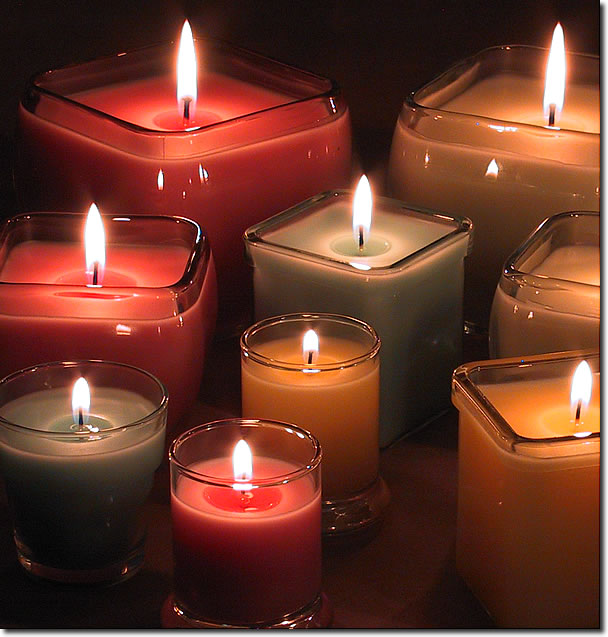 The truth is a lot of containers are actually safe. And a lot of containers are unsafe (talk about a meaningless waste of words). It is probably best to approach the topic of what actually makes a container unsafe. I can think of two categories of containers that would be considered unsafe. One such container would be those that are prone to crack. The other such container would be one that could potentially act as a wick.Many pourous materials can reportedly act as a wick. Clay flower pots are an example. It is believed that the wicking action of the pourous clay could draw enough wax to fuel the combustion cycle of a flame. In this case, your 1″ flame that originally exists only at the actual wick could grow to envelope the rim of your container, and perhaps the whole container. You would end up with a flame much larger than expected. For this to occur, two things would have to happen here. Number one would be the aforementioned wicking action. Number two would be the wax that rests on the surface of the container would have to get hot enough to combust, and then produce enough heat to keep the cycle going. The second event is rare, but possible. The truth is a lot of containers are actually safe. And a lot of containers are unsafe (talk about a meaningless waste of words). It is probably best to approach the topic of what actually makes a container unsafe. I can think of two categories of containers that would be considered unsafe. One such container would be those that are prone to crack. The other such container would be one that could potentially act as a wick.Many pourous materials can reportedly act as a wick. Clay flower pots are an example. It is believed that the wicking action of the pourous clay could draw enough wax to fuel the combustion cycle of a flame. In this case, your 1″ flame that originally exists only at the actual wick could grow to envelope the rim of your container, and perhaps the whole container. You would end up with a flame much larger than expected. For this to occur, two things would have to happen here. Number one would be the aforementioned wicking action. Number two would be the wax that rests on the surface of the container would have to get hot enough to combust, and then produce enough heat to keep the cycle going. The second event is rare, but possible.
The second type of container regarded as unsafe are those prone to crack. This can pose a risk when pouring the wax into the container, where the container, under the stress of the heat, just cracks and wax spills all over the place. So you wear shoes when pouring wax. Actually, as you might imagine, the more hazardous condition exists if the container cracks while burning. Again, hot wax spills all over the place. But, this time you have an active flame going that is at the top of a wick. As the wax drains out of the container and runs along your beautifully finished countertop, it exposes about an inch of fresh, wax-saturated wick. The flame momentarily grows to a height of ten inches, and just barely produces enough heat to catch the nearby cabinet on fire. And pretty soon your little Sugar Cookie candle has turned your kitchen into an inferno of flames. We can do a number of things to prevent cracked container candles. We can select glassware and ceramics that are intended to withstand heat. We can select the smallest possible wick that will produce the lowest possible amount of heat sufficient for a decent melt pool. We can make sure our wicks are as centered as possible to minimize the heat build-up at any localized region of the glass. We can use low melting point waxes to help keep things cool. All of these things will help. Actually, the flame surge resulting from the freshly exposed wick can occur with any kind of candle. A nice aromatic votive that has thoroughly liquefied could crack its container, exposing the wick. On a pillar that has been burning for hours and has a nice melt pool going, a sidewall could suddenly melt loose, again draining the melt pool away from the wick. When you think about it, a container candle that is prone to break is really no different than a pillar.
|
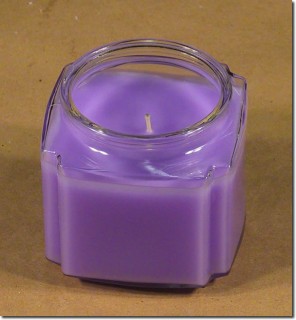 Any container made out of glass or ceramic can crack, even those that are considered heat resistant, such as canning jars or glassware made specifically for candle making. The bottom line is that all candles should be burned on a heat resistant surface, well away from any flammable objects such as drapes or overhanging cabinetry, and most importantly, under supervision. Not all containers will crack. Maybe only one in 1000 canning jars will crack. That’s not really the problem. The problem is that many people see containers as bona fide candle holders and may trust them to the point of negligence. Those are unsafe containers. So, the key to a safe container candle is supervision.
Any container made out of glass or ceramic can crack, even those that are considered heat resistant, such as canning jars or glassware made specifically for candle making. The bottom line is that all candles should be burned on a heat resistant surface, well away from any flammable objects such as drapes or overhanging cabinetry, and most importantly, under supervision. Not all containers will crack. Maybe only one in 1000 canning jars will crack. That’s not really the problem. The problem is that many people see containers as bona fide candle holders and may trust them to the point of negligence. Those are unsafe containers. So, the key to a safe container candle is supervision.
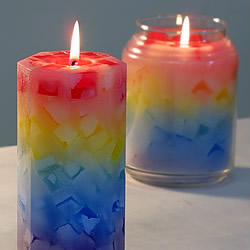
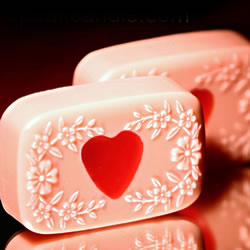
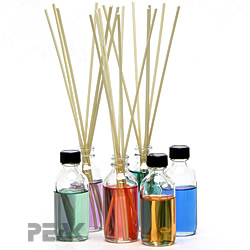
Can I burn a medium tealight candle in a glass terranium? It is open for the heat to come out but I notice the glass above is getting hot.
Can a heat froof candle explode
Just looking for advice about making my own concrete pots for soy candles. Do you know if there is a particular concrete which is best suited to this? Is there any way concrete could have the same result as a clay pot?
Just wondering, would a drinking glass or a fancy container be safe? Sorry if this question was already answered.
Sincerely,
S
Generally, yes a drinking glass or other fancy container should be safe. There are issues with the depth though of some drinking glasses. Deeper glasses are more prone to wicking problems, soot production, and cracked glass. Shorter tumblers work better than tall glasses because they allow more oxygen to the flame, and they tend to build up heat to a lesser extent than tall glasses. Glassware that are wider than they are tall generally work the well for candles.
What about glass vases? I have a 4.5″ circle Libbey vase that is as tall. I will use 2 eco 14 wicks. I could probably buy the thinner wicks since those are thicker.
I came across a cola flavored fragrance oil that I thought would be so cool to make in a Coke or Pepsi 12 oz can. Is it possible to pour and use wax in an aluminum can? I know that I would have to cut the top off and sand down any rough edge so that part should not be a problem,
Can a metal pail or container be used to make a candle? Wasn’t sure if certain metal has to be used. Afraid container may get heated along with melted wax. Thanks
What should the heat tolerance be? Temperature wise?
Will a Ball crystal mason jar be safe for candle making?
Would cut wine bottles be safe?